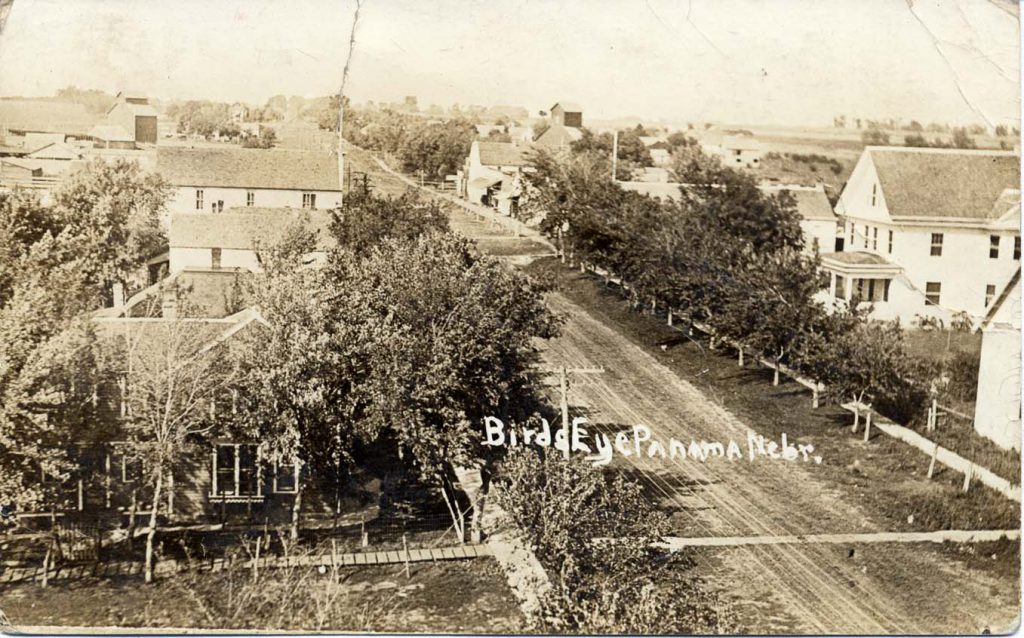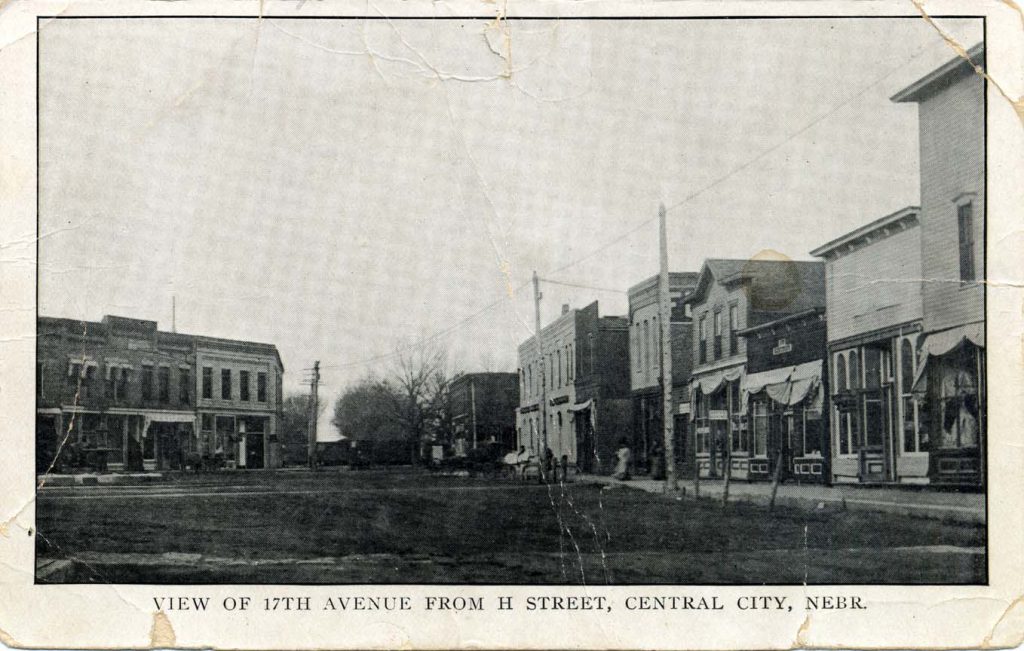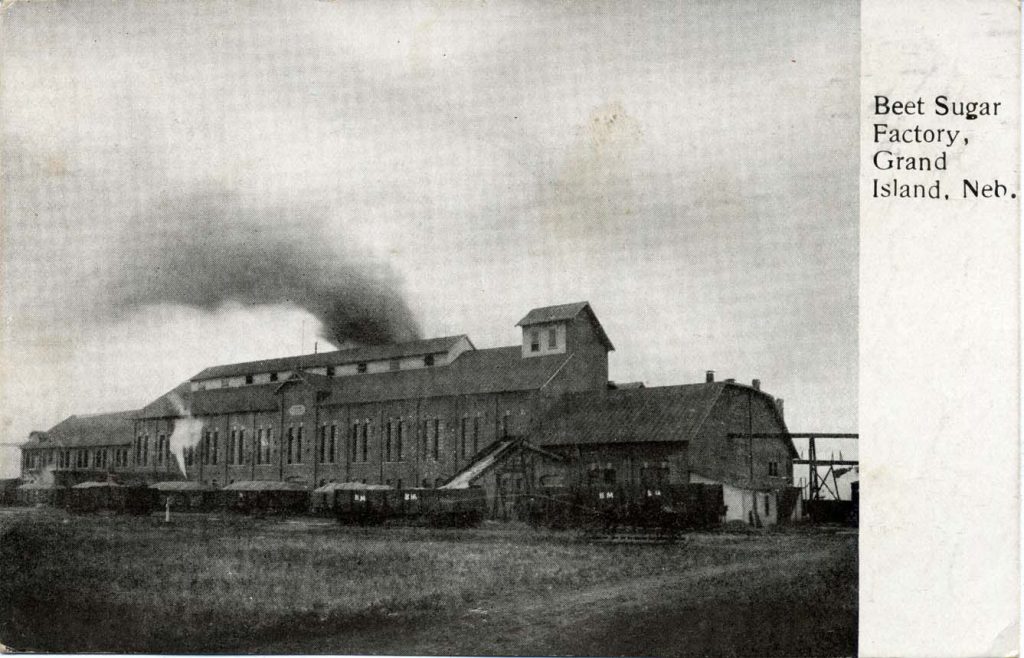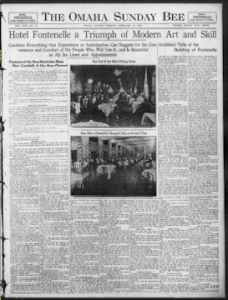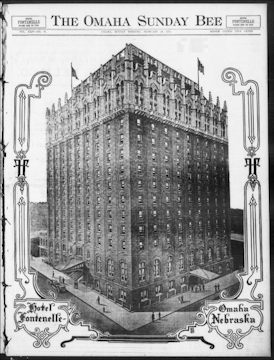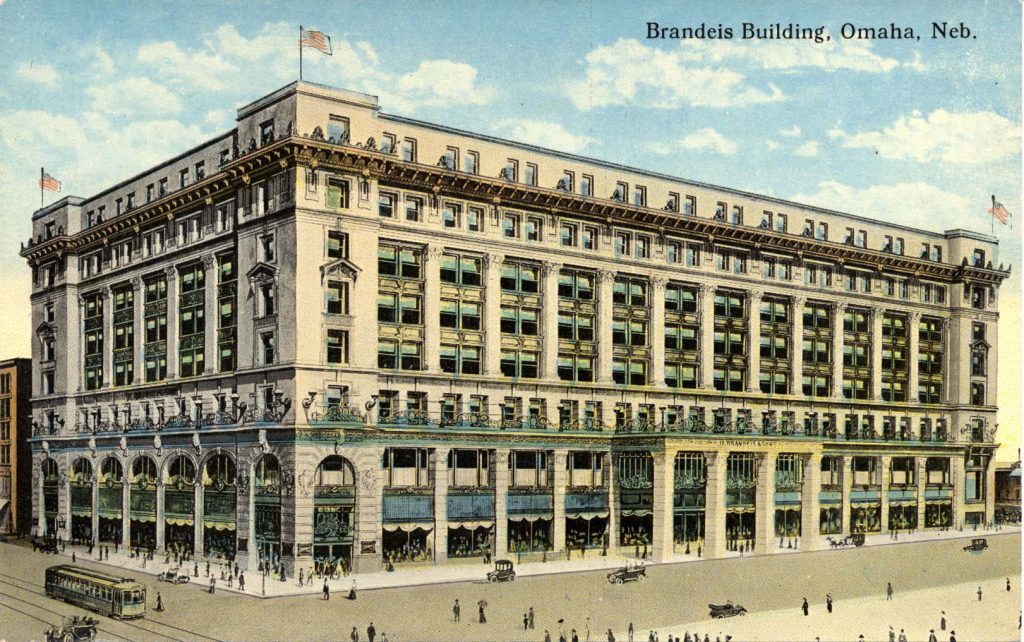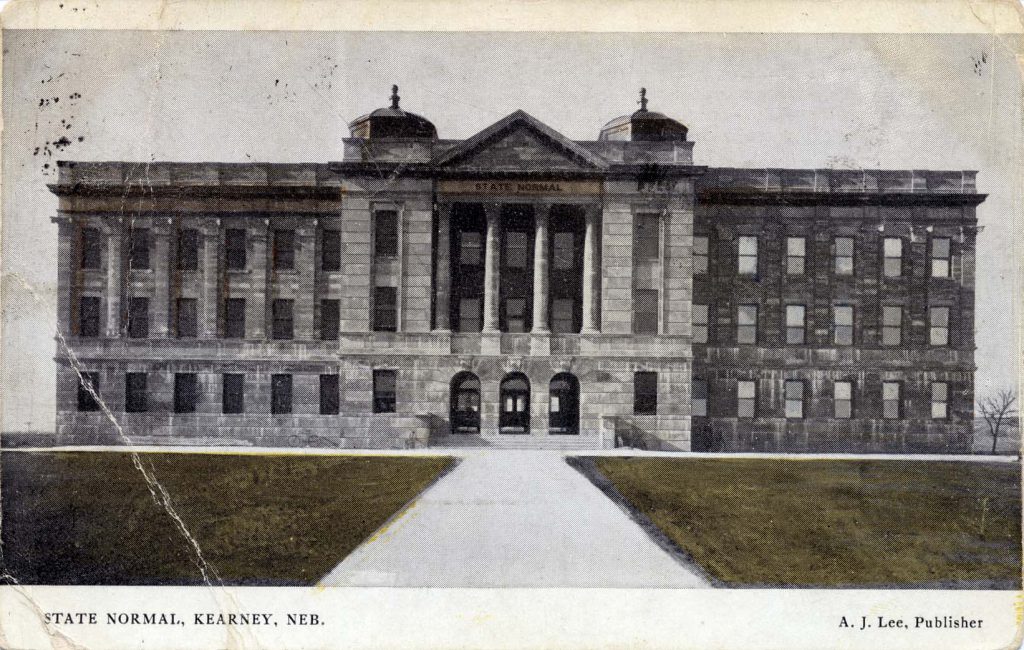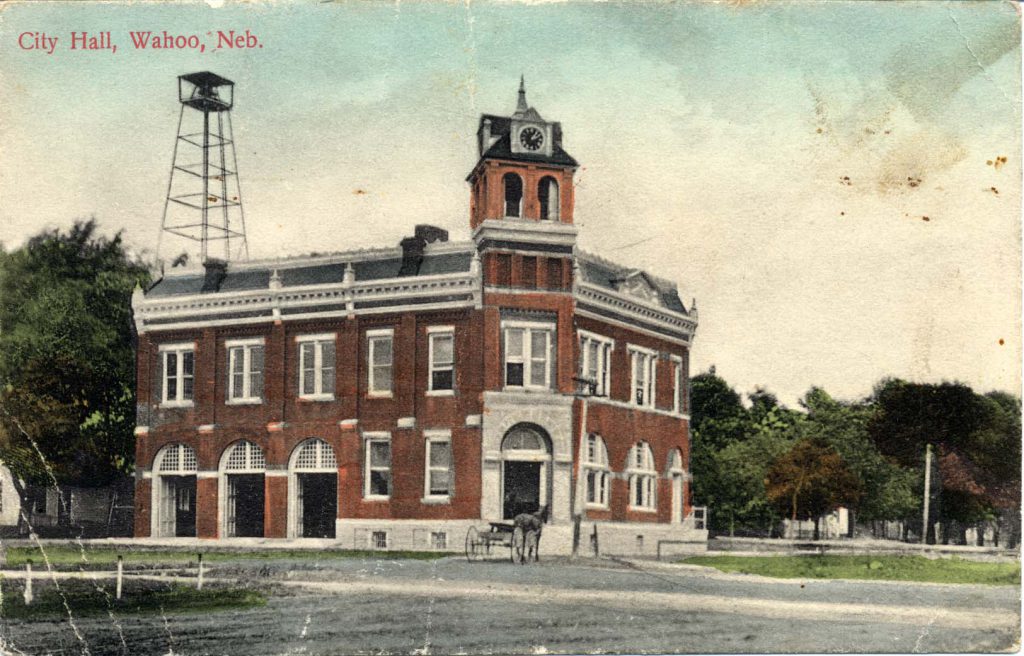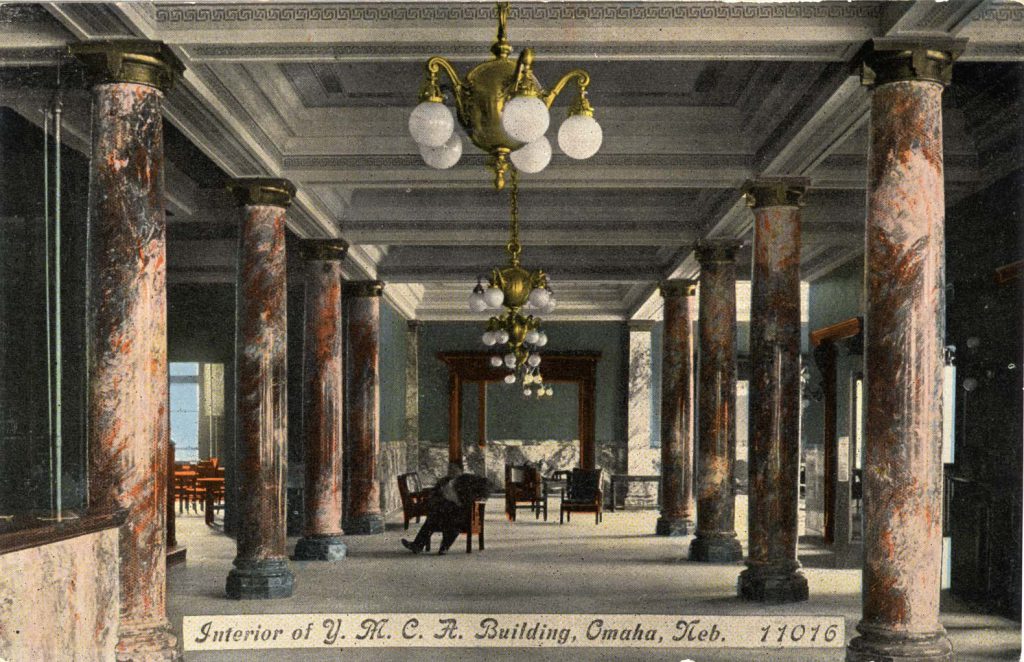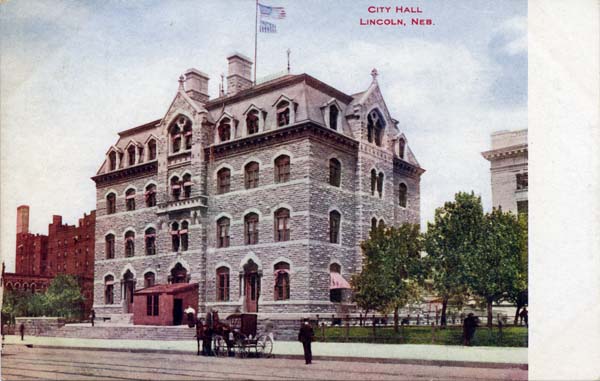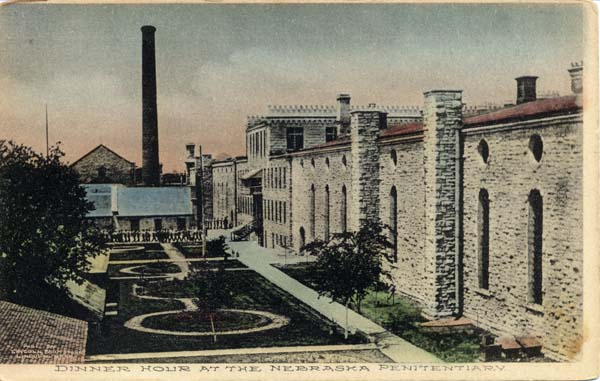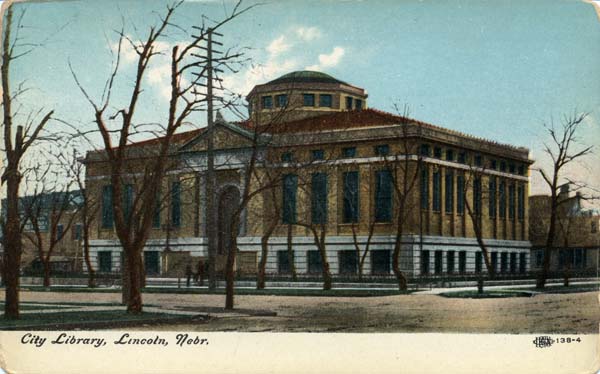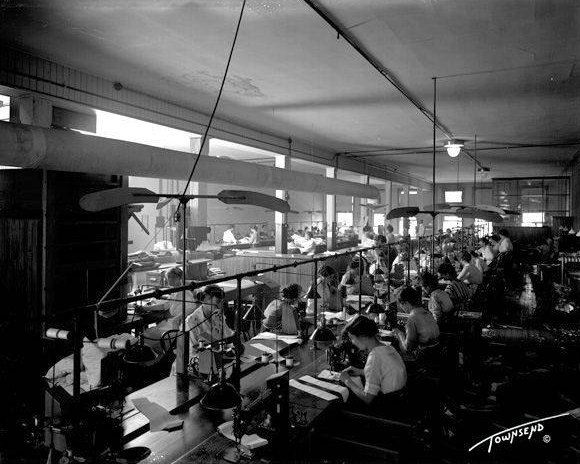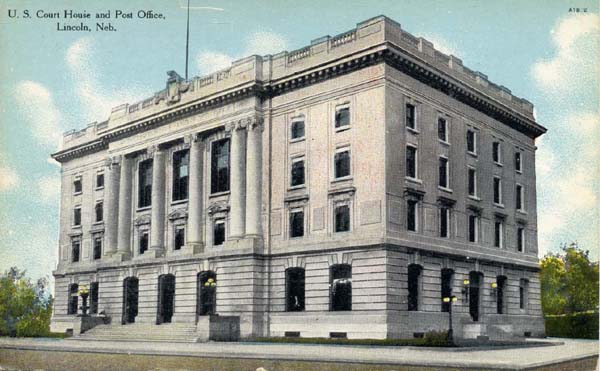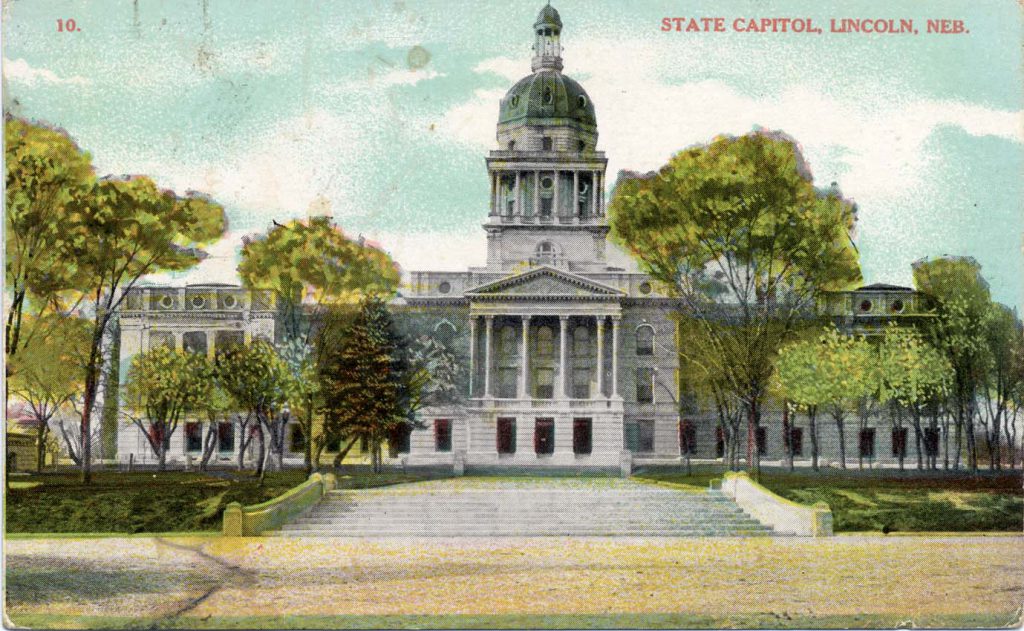Search the Blog
Categories
- Books & Reading
- Broadband Buzz
- Census
- Education & Training
- Friday Reads
- General
- Grants
- Information Resources
- Library Management
- Nebraska Center for the Book
- Nebraska Libraries on the Web
- Nebraska Memories
- Now hiring @ your library
- Preservation
- Pretty Sweet Tech
- Programming
- Public Library Boards of Trustees
- Public Relations
- Talking Book & Braille Service (TBBS)
- Technology
- Uncategorized
- What's Up Doc / Govdocs
- Youth Services
Archives
Subscribe
Category Archives: Nebraska Memories
Throwback Thursday: Birds Eye View of Panama, Nebraska.
Posted in General, Nebraska Memories
Leave a comment
The Most Wonderful Time of the Year
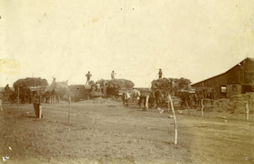 Fall is my favorite time of the year. I love the crisp morning air, the feel of a warm sweater, the tart taste of apple cider on my tongue. For some, however, fall is a sad time. The wheat has been harvested, the trees are bare, and winter is around the corner.
Fall is my favorite time of the year. I love the crisp morning air, the feel of a warm sweater, the tart taste of apple cider on my tongue. For some, however, fall is a sad time. The wheat has been harvested, the trees are bare, and winter is around the corner.
According to the song, “Nebraska in the Fall,” the leaves turn to “red and gold . . . . the flaming sumac flaunts her colors bold and 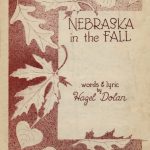 cottonwood and maple have turned to yellow gold!” Having moved to Lincoln in January, this will be my first Nebraska autumn. While I have experienced the cooler mornings, I have yet to see trees dripping with red and orange colored leaves as described by the song’s writer, Hazel Dolan of Louisville.
cottonwood and maple have turned to yellow gold!” Having moved to Lincoln in January, this will be my first Nebraska autumn. While I have experienced the cooler mornings, I have yet to see trees dripping with red and orange colored leaves as described by the song’s writer, Hazel Dolan of Louisville.
However, fall does not invoke images such as those described by Hazel Dolan for all people. In my experience, some see fall as a season of leafless trees and bleak landscapes, like the scene on this postcard of the Pavilion at Omaha’s River Park. 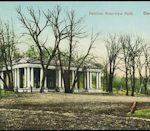 Regardless, many find a way to enjoy the season. This group from Lincoln’s Union College apparently found something to celebrate or at least a way to stay warm!
Regardless, many find a way to enjoy the season. This group from Lincoln’s Union College apparently found something to celebrate or at least a way to stay warm! 
While most of the fall-related images in Nebraska Memories are of leafless trees, there are many other pictures that capture the essence of autumn – crews harvesting hay and other crops, nature scenes and music scores.
Visit Nebraska Memories to search for or browse through many more historical images digitized from photographs, negatives, postcards, maps, lantern slides, books and other materials. Nebraska Memories is a cooperative project to digitize Nebraska-related historical and cultural heritage materials and make them available to researchers of all ages via the Internet. Nebraska Memories is brought to you by the Nebraska Library Commission. If your institution is interested in participating in Nebraska Memories, see http://nlc.nebraska.gov/nebraskamemories/participation.aspx for more information, Devra Dragos, Technology & Access Services Director
Posted in Nebraska Memories
Leave a comment
Throwback Thursday: Library of William Jennings Bryan
Postcard of the Library of William Jennings Bryan at Fairview, Lincoln, Nebraska. Approximate date is early 1900’s.
Posted in General, Nebraska Memories
1 Comment
Throwback Thursday: Street View of Central City, Nebraska.
Posted in General, Nebraska Memories
Leave a comment
Throwback Thursday: Beet Sugar Factory in Grand Island, Nebraska
Posted in General, Nebraska Memories
Leave a comment
Hotel Fontenelle and Hotel Castle
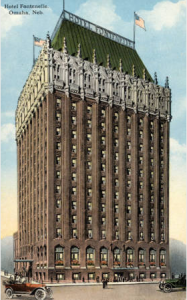 The first images the Hotel Fontenelle and Hotel Castle I saw were those included in Nebraska Memories. I didn’t know anything about the hotels and there wasn’t a lot of information about them included in Nebraska Memories. I decided to do a bit of research hoping to find a few interesting tidbits that I could share with you. I found more than just a few tidbits; I found what I consider to be a research jackpot. The Omaha Daily Bee newspaper did multiple page specials on both hotels when they opened. These special supplements are made up of multiple stories that tell about the hotels. Many of the companies that built, furnished and continued to work with the hotels also had advertisements in the supplements highlighting how they were connected to the hotels. These supplements were fun to read. I learned a lot about each hotel but it was also amusing to see what things were important to write about in 1915.
The first images the Hotel Fontenelle and Hotel Castle I saw were those included in Nebraska Memories. I didn’t know anything about the hotels and there wasn’t a lot of information about them included in Nebraska Memories. I decided to do a bit of research hoping to find a few interesting tidbits that I could share with you. I found more than just a few tidbits; I found what I consider to be a research jackpot. The Omaha Daily Bee newspaper did multiple page specials on both hotels when they opened. These special supplements are made up of multiple stories that tell about the hotels. Many of the companies that built, furnished and continued to work with the hotels also had advertisements in the supplements highlighting how they were connected to the hotels. These supplements were fun to read. I learned a lot about each hotel but it was also amusing to see what things were important to write about in 1915.
The Hotel Fontenelle opened in February 1915 on the corner of 18th and Douglas streets. It operated as a hotel until 1971 and was razed in 1983. The supplement covering the Hotel Fontenelle in the Omaha Daily Bee was published on February 28, 1915. The supplement is 15 pages long and was published in two sections. Both parts contain photos of the inside of the hotel.
Here are a few things in the article that caught my attention for one reason or another.
- “There are really sixteen stories in the Fontenelle – above the street. And there are two stories, very busy stories below the street. Total height, eighteen stories.”
- The architecture is Gothic. The first 10 stories are dark brick, above that is white tile and “the building design is of fretted and gabled French chateau style, with gabled roof painted a pleasing green.”
- The land cost $215,000.
- The land and building were owned by the Douglas Hotel Company. The supplement includes a list of officers and directors of the Douglas Hotel
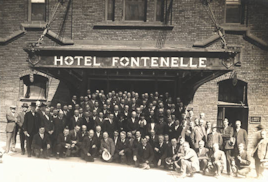 Company. The Interstate Hotel Company of Nebraska leased the hotel and ran it.
Company. The Interstate Hotel Company of Nebraska leased the hotel and ran it. - William R. Burbank was the director general of the hotel. Abraham Burbank was the managing director.
- The hotel has 350 guest rooms. The room rates varied depending on if they faced the street and the size and configuration of the room. The cheapest room listed was $2 a day while a corner suite that had a bedroom, bathroom and sitting room was $10 a day.
- “Sample rooms will rent at $2.50 up, according to size and location.” Traveling salesmen stayed at the hotel and used a sample room to display their products. The
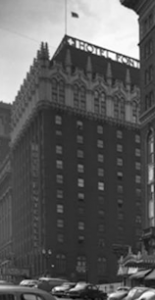 sample rooms were located on the tenth and eleventh floors. The rooms had thick carpeting, telephones and private toilet and bath rooms.
sample rooms were located on the tenth and eleventh floors. The rooms had thick carpeting, telephones and private toilet and bath rooms. - All of the rooms in the hotel had a telephone. Telephones were also placed in other locations such as the kitchen, barbershop, lobby and elevator. A very long article explains the 63 miles of telephone wire used and the switchboard could serve a town of about 3,000 people.
- Every room had “ice water on tap”. The water was “cooled to a temperature of forty degrees by ammonia coils” before being distributed through the building.
- The L. G. Doup Co. of Omaha provided the box springs and mattresses for the hotel. The mattresses were of the “very best quality — the hair used in the mattresses is long curled horse hair of the quality known as drawings…”
- “Big Electric Signs on top of New Hotel” – A short articles talks about the importance of the electric signs. “It is so built that it harmonizes with the
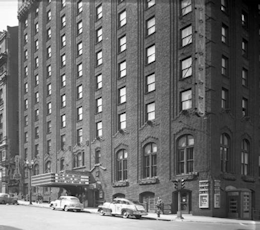 gable roof of the French chateau style of architecture.”
gable roof of the French chateau style of architecture.” - Included in the supplement are the floor plans for the ground floor and the main floor.
- “Hotel on Cow Stable Site” This column talks about the land the hotel was built on and how it was “far remote in the outskirts of a frontier country village fifty year ago; today the location of Omaha’s $1,000,000 modern and palatial hotel…”
- “Hotel Has Its Own Laundry” – I was surprised to read that the laundry was located on the 13th floor. “This is the only original motor driven laundry in Omaha. … big “extractors,” which turn on their vertical axes at a speed of a thousand revolutions a minute. These are for drying the wash. They remove the moisture by centrifugal force instead of by the slow and primitive process of drying.”
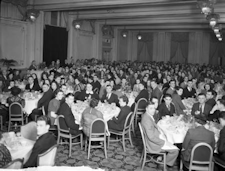
- Thomas R. Kimball was the architect for the hotel. According to the article, he was also the architect for the S. Cecelia’s cathedral, the Burlington station, designed the city library and the Methodist hospital.
- I’ve never heard of a telautograph but the Fontenelle had one. “A telautograph is an instrument that will reproduce your handwriting perfectly at a distance.”
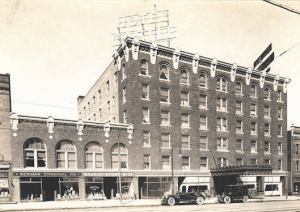 The Hotel Castle was located on corner of 16th and Jones Street and opened in March 1915. The main building was six stories high. The hotel had 150 rooms. All of the rooms had a toilet and running hot and cold water. One hundred of them also had private baths. Rooms rented for $1.25-$2 a day. Attached to the hotel is a two-story building referred to as the annex. The 50×80 feet convention hall or ballroom is located on the second floor of the annex.
The Hotel Castle was located on corner of 16th and Jones Street and opened in March 1915. The main building was six stories high. The hotel had 150 rooms. All of the rooms had a toilet and running hot and cold water. One hundred of them also had private baths. Rooms rented for $1.25-$2 a day. Attached to the hotel is a two-story building referred to as the annex. The 50×80 feet convention hall or ballroom is located on the second floor of the annex.
The special supplement about the Hotel Castle was published on March 21, 1915 in the Omaha Daily Bee. Here are some of things I found interesting about the Hotel Castle.
- “The Hotel Castle is absolutely fireproof. From basement to proof [sic] there is hardly a splinter in the construction that can be consumed by fire. The doors of the rooms are about the only inflamable things, the rest being concrete and marble.” Multiple times in the article, fireproofing is mentioned. This may seem odd at first but keep in mind that in 1913 a fire destroyed the Dewey Hotel killing around 20 people. If you would like to read about this fire there is an article about it in the Mach 1, 1913 issue of the Omaha Daily Bee.
- “even the smallest rooms have three lights,…and a third at the head of the bed so that guests can enjoy the luxury of reading in bed.”
- Miss Clara Fry was proprietor of the cigar stand. Miss Fry also owned a cigar stand in the Plains Hotel in Cheyenne Wyo.

- “Vinegar, pickles, olives, sauerkraut, ketchup and the like will be supplied to the new Castle by Haarmann Vinegar and Pickle Company…”
- The supplement contains a picture of a guest room and a bathroom and other rooms in the hotel.
- Yourex silverware was used at the hotel.
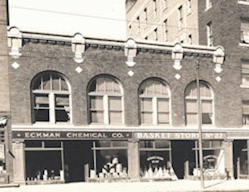
- “The Eckman Chemical Company was the first outside concern to rent one of the store buildings facing Sixteenth Street on the ground floor of the Castle.” According to their ad “If you have sick hogs, try Eckman’s special treatment for sick hogs.”
- If you need a laugh, I’d suggest reading the article “Some Guests to be Barred – Messrs. Rat, Mouse, and Bug and Their Families to Find No Homes Here.” It is a rather long article that tells the story of how Mr. Rat and his family were not able to find a place to live in the new Castle Hotel.
I hope you enjoyed learning about the Hotel Fontenelle and Hotel Castle.
Visit Nebraska Memories to search for or browse through many more historical images digitized from photographs, negatives, postcards, maps, lantern slides, books and other materials.
Nebraska Memories is a cooperative project to digitize Nebraska-related historical and cultural heritage materials and make them available to researchers of all ages via the Internet. Nebraska Memories is brought to you by the Nebraska Library Commission. If your institution is interested in participating in Nebraska Memories, see http://nlc.nebraska.gov/nebraskamemories/participation.aspx for more information, contact Devra Dragos, Technology & Access Services Director.
Posted in General, Nebraska Memories, Technology
1 Comment
Throwback Thursday: Brandeis Building in Omaha, Nebraska
Posted in General, Nebraska Memories
Leave a comment
Throwback Thursday: Interior photo of YMCA, Omaha, Nebraska
Posted in General, Nebraska Memories
1 Comment
Plotting the Route: Maps of the Missouri River
The summer I turned ten, my family drove from Montana to northern California to visit my grandparents. My dad put me in charge of plotting our route. This was pre-GPS. I actually had to look at the road atlas. Unfortunately, my dad rejected many of suggestions. I think it had something to do with the fact that some of them would have taken us through North and South Dakota, Wyoming, Utah and Colorado – not exactly the most direct way to travel from Montana to California. Regardless, I found I enjoyed looking at maps. Something I still like to do.
Maps do more than tell us how to get from one place to another. Depending on the map, they can convey information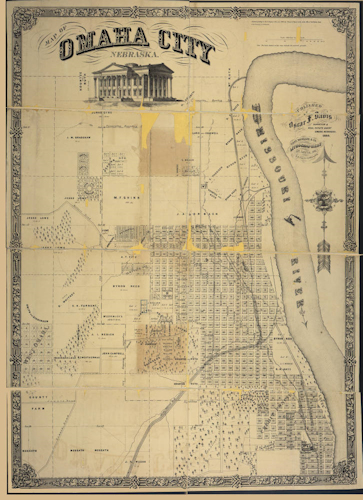 like elevation, land use, socio-economic levels. If they are maps of bodies of water, they mark the locations of navigational hazards, ship wrecks and water depth. In some cases, we can use maps to show how rivers have changed their course over time or the evolution of land use in an area. Nebraska Memories features several maps and an atlas or two.
like elevation, land use, socio-economic levels. If they are maps of bodies of water, they mark the locations of navigational hazards, ship wrecks and water depth. In some cases, we can use maps to show how rivers have changed their course over time or the evolution of land use in an area. Nebraska Memories features several maps and an atlas or two.
Maps depict more than geography. Some focus on the mundane and the ordinary, such as city planning. For example, this map of Omaha from 1866 shows the city laid out in a grid pattern. While the city blocks are numbered, individual owners are not named. With a little help from a Polk Directory and/or the Census, you could figure out who lived where. Regardless, this map provides us with plenty of information — it shows the location of Nebraska’s first capitol building at Twentieth and Dodge Streets. It also tells us the Omaha experienced some flooding during its early years. How do I know? The map marks the locations of several levees along Omaha’s eastern boundary. Also, the cemeteries are located on the western edge of Omaha, far from the Missouri River.
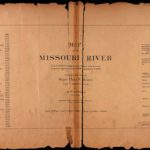 Speaking of the Missouri River, two atlases chart the course of the Missouri River from its mouth to its source in Three Forks, Montana. Both the Map of the Missouri River from its Mouth to Three Forks, Montana and the Map of the Missouri River from surveys made, in accordance with acts of Congress approved June 18, 1878 and March 3, 1879 under the direction of Major Chas. R. Sutter show an amazing amount of detail.
Speaking of the Missouri River, two atlases chart the course of the Missouri River from its mouth to its source in Three Forks, Montana. Both the Map of the Missouri River from its Mouth to Three Forks, Montana and the Map of the Missouri River from surveys made, in accordance with acts of Congress approved June 18, 1878 and March 3, 1879 under the direction of Major Chas. R. Sutter show an amazing amount of detail.
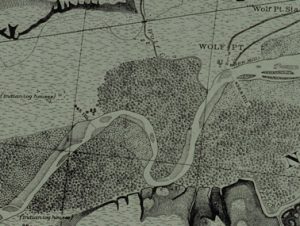 These maps plot the locations of islands, sandbars, vegetation, the locations of previous channels and much, much more. The Map of the Missouri River from its Mouth to Three Forks, Montana also notes Indian settlements, wood yards, and large ranches. Since the maps are drawn as though you are looking at them from above, it’s like looking at the nineteenth-century version of a Google map.
These maps plot the locations of islands, sandbars, vegetation, the locations of previous channels and much, much more. The Map of the Missouri River from its Mouth to Three Forks, Montana also notes Indian settlements, wood yards, and large ranches. Since the maps are drawn as though you are looking at them from above, it’s like looking at the nineteenth-century version of a Google map.
Maps, like old photographs and postcards allow us to travel into the past. We not only see how rivers have changed course or how cities have evolved, we catch a glimpse of what mattered to the mapmakers. Since the Missouri River was a major transportation route, these mapmakers were focused on documenting navigational hazards, woodlots, and Indian settlements. They wanted to ensure that riverboats would be able to navigate safely, as well as resupply as necessary. Looking back on that long ago road trip to California, the maps we used may not have contained the same sorts of information as the ones found within Nebraska Memories, but they provided us with the information we needed.
Visit Nebraska Memories to search for or browse through many more historical images digitized from photographs, negatives, postcards, maps, lantern slides, books and other materials.
Nebraska Memories is a cooperative project to digitize Nebraska-related historical and cultural heritage materials and make them available to researchers of all ages via the Internet. Nebraska Memories is brought to you by the Nebraska Library Commission. If your institution is interested in participating in Nebraska Memories, see http://nlc.nebraska.gov/nebraskamemories/participation.aspx for more information, contact Devra Dragos, Technology & Access Services Director.
Posted in Nebraska Memories
Leave a comment
Throwback Thursday: Nebraska State Penitentiary
Picture postcard of the exterior of the Nebraska State Penitentiary. Written on the postcard is Dinner Hour at the Nebraska Penitentiary. Approximate date is early 1900’s.
Posted in General, Nebraska Memories
2 Comments
Sometimes it is more than just a Nebraska Memories Blog Post
This week I had planned to write a short blog post highlighting some of the photos in Nebraska Memories taken 100 years ago in 1916. While I hadn’t actually typed a single character, mentally I had a great start on the post. That was until I did a quick web search on Spirella. That search started a chain of events that led to a bit of work and me deciding to revise the post I’d been mentally composing.
Here is the picture from 1916 that started my search. As you can see this image shows a room full of women sewing what looks like wide strips of fabric.
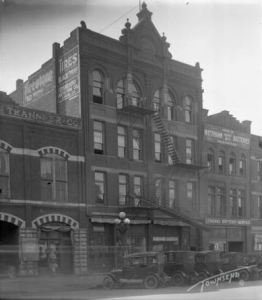 The Spirella Company was located at 211-215 S. 11th Street, Lincoln, Nebraska. The Library Commission’s office is located between 12th and 13th streets so this building would have been located about a block west. Unfortunately, the building was torn down but we do have a picture of the outside of the building taken in 1918.
The Spirella Company was located at 211-215 S. 11th Street, Lincoln, Nebraska. The Library Commission’s office is located between 12th and 13th streets so this building would have been located about a block west. Unfortunately, the building was torn down but we do have a picture of the outside of the building taken in 1918.
Don’t worry if you don’t recognize the name Spirella. Before starting this blog post, all I knew was that the Spirella Company made corsets and that in 1918 Ira B. Saunders was the General Manager of the plant.
A quick web search led me to the article in Wikipedia about Spirella. It provided me with a lot more information about Spirella and the twisted and flattened coils of wire used in the corsets. The Wikipedia article however was missing what I considered to be an important piece of information. There was no reference of the factory in Lincoln. How could that be, I was just looking at a picture of the factory.
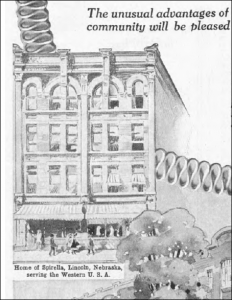 This is where the extra bit of work started. I knew I had to add the Lincoln location to the article but before I did, I wanted to do a bit of research to see if I could find any more information. The first thing I found that clearly confirmed that Spirella had a location in Lincoln was a one-page ad in the March 1917 issue of The Ladies’ Home Journal. The ad contained an image of the plant and stated, “At Lincoln, Nebraska, a plant was located to care for our clients west of the Mississippi.” The full ad is available online but I have included the image of the Lincoln building that was used in the ad. Did you notice that the top decorative triangle is missing? The curvy line to the top and left of the building is an image of the springs used in the corsets.
This is where the extra bit of work started. I knew I had to add the Lincoln location to the article but before I did, I wanted to do a bit of research to see if I could find any more information. The first thing I found that clearly confirmed that Spirella had a location in Lincoln was a one-page ad in the March 1917 issue of The Ladies’ Home Journal. The ad contained an image of the plant and stated, “At Lincoln, Nebraska, a plant was located to care for our clients west of the Mississippi.” The full ad is available online but I have included the image of the Lincoln building that was used in the ad. Did you notice that the top decorative triangle is missing? The curvy line to the top and left of the building is an image of the springs used in the corsets.
 In the 1917 issue of The American Federationist another ad mentions the Lincoln location. In the add it states “Spirella Corsets Are Made in Spirella’s Daylight Factories under Safe, Sanitary, Convenient, Working Conditions by well paid, contented, skilled works who find joy in their work.”
In the 1917 issue of The American Federationist another ad mentions the Lincoln location. In the add it states “Spirella Corsets Are Made in Spirella’s Daylight Factories under Safe, Sanitary, Convenient, Working Conditions by well paid, contented, skilled works who find joy in their work.”
While I had more than enough information to update the Wikipedia article I was still curious, so I did a quick search across the historic collection of newspapers available on the Library of Congresses’ Chronicling America: Historic American Newspapers website. While I didn’t find any information about the factory itself, I did learn a bit more about the corsets and the local corsetiere.
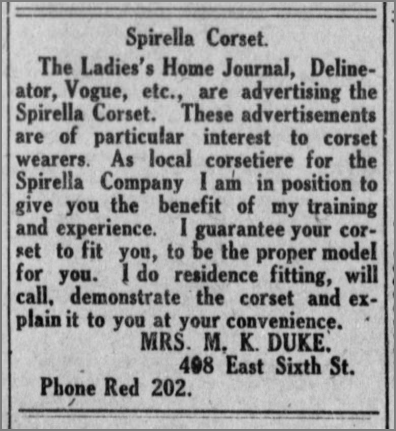 Mrs. Magnolia Duke was a corsetiere in the North Platte area. There were numerous ads for her services in The North Platte semi-weekly tribune along with articles that mention her work. To the right is an example of one of those ads. This is from The North Platte semi-weekly tribune. (North Platte, Neb.) May 23, 1911, Image 8
Mrs. Magnolia Duke was a corsetiere in the North Platte area. There were numerous ads for her services in The North Platte semi-weekly tribune along with articles that mention her work. To the right is an example of one of those ads. This is from The North Platte semi-weekly tribune. (North Platte, Neb.) May 23, 1911, Image 8
In August of 1911, Magnolia traveled to Pennsylvania to attend the National Training School of Spirella Corsetieres. You can read about her trip in the article titled Home from Training School that appeared in the Sept. 1 edition of The North Platte semi-weekly tribune. (The article is at the top of the page, just to the right of the owls.)
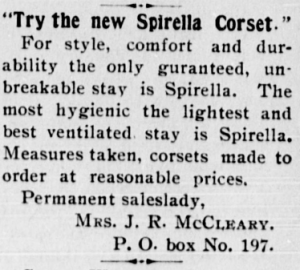 Another corsetiere in the state was Mrs. J. R. McCleary of Falls City. Here is her ad for corsets that appeared in the June 28, 1907 issue of The Falls City Tribune.
Another corsetiere in the state was Mrs. J. R. McCleary of Falls City. Here is her ad for corsets that appeared in the June 28, 1907 issue of The Falls City Tribune.
After gathering this information, I was able to update the Wikipedia article to include the factory in Lincoln. I also passed the information on to my colleague who added additional information to the photo in Nebraska Memories. As you can see, what I thought was going to be a simple blog post turned out to be a chance for me to correct wrong information and provided additional information to enhance our metadata in Nebraska Memories.
Visit Nebraska Memories to search for or browse through many more historical images digitized from photographs, negatives, postcards, maps, lantern slides, books and other materials.
Nebraska Memories is a cooperative project to digitize Nebraska-related historical and cultural heritage materials and make them available to researchers of all ages via the Internet. Nebraska Memories is brought to you by the Nebraska Library Commission. If your institution is interested in participating in Nebraska Memories, see http://nlc.nebraska.gov/nebraskamemories/participation.aspx for more information, contact Devra Dragos, Technology & Access Services Director.
Posted in General, Information Resources, Nebraska Memories, Technology
1 Comment
Throwback Thursday: Nebraska Governor’s Mansion
Postcard of the Nebraska Governor’s Mansion located on 15th and H Streets in Lincoln, Nebraska. Approximate date is early 1900’s.
Posted in General, Nebraska Memories
Leave a comment
Throwback Thursday: U.S. Courthouse and Post Office
Postcard of the U.S. Courthouse and Post Office located in Lincoln, Nebraska from approximately the early 1900’s.
Posted in General, Nebraska Memories
Leave a comment
Throwback Thursday: Nebraska State Capitol Building
Postcard of the Nebraska State Capitol Building, 1910.
This postcard was donated to the Library Commission for inclusion in Nebraska Memories. If you have old photos or postcards you would like to donate, please contact us at 402-471-2045 or 800-307-2665.
Posted in General, Nebraska Memories
Leave a comment
Here Comes the Bride!
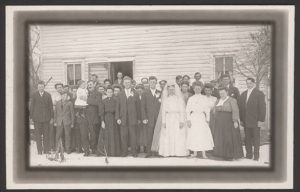 June is the month for weddings. In Western culture, the tradition of marrying in June dates from Roman times, when early Romans celebrated the festival of Juno, the goddess of marriage and childbirth, on June first. As such, couples considered June to be a good time to marry. During the Victorian Era, weddings were held in June because of the availability of flowers. Some claim that because many people bathed only once a year, usually in the spring, brides chose June because they and their guests were still relatively clean. In the modern era, brides and grooms may select June for other reasons. Or they may choose not to wed in June, but at a time more convenient for them.
June is the month for weddings. In Western culture, the tradition of marrying in June dates from Roman times, when early Romans celebrated the festival of Juno, the goddess of marriage and childbirth, on June first. As such, couples considered June to be a good time to marry. During the Victorian Era, weddings were held in June because of the availability of flowers. Some claim that because many people bathed only once a year, usually in the spring, brides chose June because they and their guests were still relatively clean. In the modern era, brides and grooms may select June for other reasons. Or they may choose not to wed in June, but at a time more convenient for them.
Interestingly, it appears that of the couples appearing in Nebraska Memories, many chose not to marry in June. According to the dates on the photographs, these couples wedded in months other than June. Or at least the photographs were not taken in June. So perhaps June was not a popular time for couples to wed in Nebraska. Unfortunately, we don’t know why couples chose their wedding dates. For some, it simply may have made more sense to marry in the dead of winter than to wait for warm summer days.
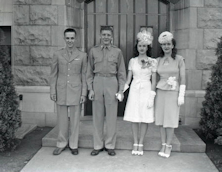 Having grown up among farmers and ranchers, where weddings were often squeezed in between planting and harvesting, haying or even hunting season, I think some couples wedded when they and their families had a free moment! In same cases, it appears couples married before the groom had to report to base or ship off to war.
Having grown up among farmers and ranchers, where weddings were often squeezed in between planting and harvesting, haying or even hunting season, I think some couples wedded when they and their families had a free moment! In same cases, it appears couples married before the groom had to report to base or ship off to war.
Looking through Nebraska Memories, I found a variety of wedding-related 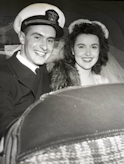 photographs. For the most part, they are of brides and grooms, wedding venues and wedding parties. Many are studio portraits of brides and grooms, but a few are less formal. No, not the candid shots that we’re used to seeing of brides feeding cake to their grooms or children dancing! But smiling and relaxed couples, standing with friends or sitting in their cars.
photographs. For the most part, they are of brides and grooms, wedding venues and wedding parties. Many are studio portraits of brides and grooms, but a few are less formal. No, not the candid shots that we’re used to seeing of brides feeding cake to their grooms or children dancing! But smiling and relaxed couples, standing with friends or sitting in their cars.
While we don’t know the fate of the couples featured in this post, we do know what happened to one: Ben and Katherine Homan of David City, Nebraska, who married on November 22, 1901. According to the notes attached to this photograph, they raised nine children and operated Homan Appliance store. A colleague did some digging and discovered they had many grandchildren and great-grandchildren. 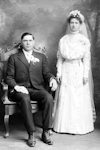
Visit Nebraska Memories to search for or browse through many more historical images digitized from photographs, negatives, postcards, maps, lantern slides, books and other materials.
Nebraska Memories is a cooperative project to digitize Nebraska-related historical and cultural heritage materials and make them available to researchers of all ages via the Internet. Nebraska Memories is brought to you by the Nebraska Library Commission. If your institution is interested in participating in Nebraska Memories, see for more information, contact Devra Dragos Technology & Access Services Director.
Posted in General, Nebraska Memories
Leave a comment
